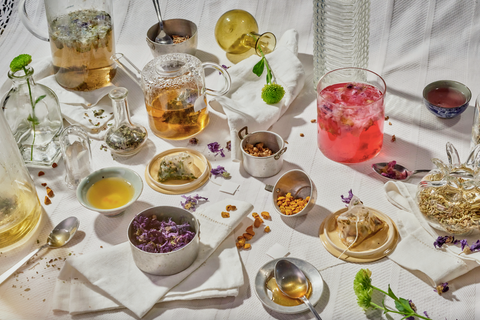Exploring the distinction between 'biological' Italian food products and 'organic' in the USA reveals a fascinating tapestry of regulatory and certification nuances. While both terms signify a commitment to sustainable, environmentally conscious agriculture, the path to certification in each country is paved with unique standards and consumer expectations. This comparison delves into the heart of these differences, guided by the latest regulations and market trends. It offers an in-depth analysis designed to enrich your understanding of global organic practices. With an eye on both the macro and micro aspects of the subject, this post promises a comprehensive overview that not only informs but also enlightens, bridging the gap between two cultures united by a common goal yet separated by their approach to achieving it.
Certification and Regulatory Bodies
- Italy (Biological): In Italy, "biological" products are governed by European Union regulations for organic products. The EU has strict guidelines for what constitutes an organic product, focusing on sustainability, biodiversity, and the prohibition of synthetic fertilizers and pesticides. Certification is managed by various bodies accredited by the EU, ensuring that products meet these stringent requirements.
- USA (Organic): Organic products in the USA are certified by the United States Department of Agriculture (USDA) through its National Organic Program (NOP). The NOP standards restrict the use of synthetic fertilizers, pesticides, and genetically modified organisms (GMOs). The certification process involves ensuring that producers adhere to these standards, with third-party agencies conducting audits and granting certification.
Standards and Practices
- Pesticides and Fertilizers: Both systems prohibit most synthetic pesticides and fertilizers, but the specific allowed and prohibited substances can vary. The EU's regulations are generally considered more stringent in terms of pesticide use and the promotion of biodiversity.
- GMOs: "The European Union (EU) adopts a cautious and restrictive approach towards genetically modified organisms (GMOs), characterized by rigorous regulatory processes and strict labeling requirements. Before any GMO can be marketed or cultivated within the EU, it must undergo a thorough assessment and receive authorization, ensuring its safety for human consumption, animal feed, and the environment. Additionally, the EU mandates clear labeling for all foods containing or produced from GMOs, providing consumers with the information needed to make informed choices about the products they purchase.
In contrast, the United States Department of Agriculture (USDA) has a different stance regarding GMOs, especially in the context of organic production. According to the USDA's National Organic Program (NOP), the use of GMOs is strictly prohibited in any product labeled as organic. This prohibition extends to all stages of organic food production, processing, and handling, ensuring that organic products are free from genetically modified ingredients. The USDA's organic standards aim to preserve natural biodiversity and promote ecological balance, requiring that organic products do not contain GMOs, thereby preventing contamination of organic crops with genetically modified genetic material. This fundamental difference underscores the contrasting regulatory frameworks and consumer expectations regarding GMOs and organic products in the EU and the US."
Animal Welfare: The EU places a significant emphasis on animal welfare in its organic standards, requiring that animals have access to outdoor spaces and setting specific standards for their care. The USDA organic standards also include animal welfare considerations, but critics argue that the EU's standards are more comprehensive.
Labeling
- Italy/EU: The EU organic logo (a green leaf) is compulsory on all pre-packaged organic products that are produced within the European Union. Additionally, products can carry the logo of the specific certification body.
- USA: Organic products in the USA carry the USDA Organic seal, which signifies compliance with NOP standards. There are different labeling categories (e.g., "100% Organic," "Organic," "Made with Organic Ingredients") that indicate the percentage of organic ingredients in the product.
Consumer Perception and Trust
- Italy/EU: There is a high level of trust in the "biological" label among European consumers, partly due to the stringent regulations and the cultural importance of food quality and safety.
- USA: While there is significant trust in the USDA Organic label, there have been debates and skepticism regarding the standards and consistency of enforcement, partly due to the vast and diverse nature of the agricultural industry in the USA.
In summary, while both "biological" in Italy and "organic" in the USA aim to promote healthier, more environmentally friendly agricultural practices, there are notable differences in their standards, certification processes, and consumer perceptions. These differences reflect broader cultural and regulatory approaches to food production and safety in each region.






